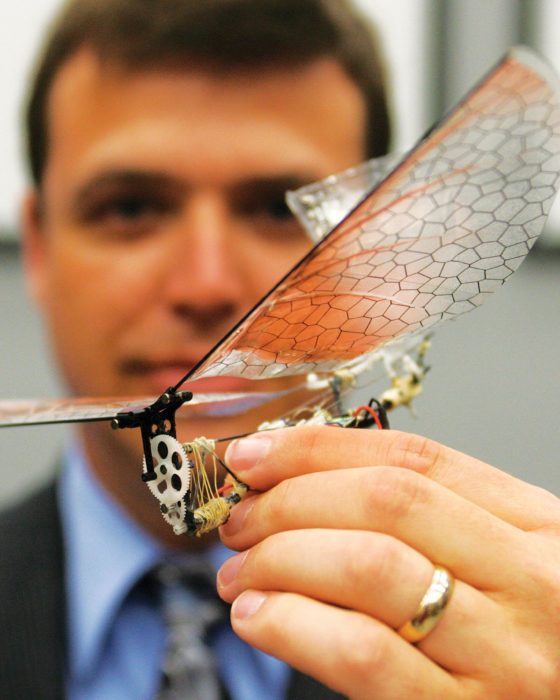The recent wave of government disclosures about America’s internal surveillance programs and use of drone technology has been a creepy shock to our sense of freedom. But be warned: What they’re telling us now is just the beginning.
The hummingbird came to rest outside my living-room window. As it stared in at me, I couldn’t help but wonder if I was under surveillance by robot drones from the National Security Agency (NSA), the Central Intelligence Agency (CIA) or Cornell University.
Forget the armed unmanned drones that look like large model airplanes currently flying over the battlefields of Afghanistan and shooting out death rays. Forget R2-D2 and C-3PO from Star Wars. You can recognize those robots for what they are. Now, thanks to a shocking new technology combining biology, electronics and mechanics, private research companies and universities—working in conjunction with the federal government—have created a new generation of spy drones that look, fly, turn and hover like birds and winged insects. They are, in fact, indistinguishable from the real thing.
“They [scientists] have made so many advances, the technology is moving along so fast, it’s hard to keep up with reality,” says Jim DeFelice, the techno-thriller coauthor of the Dreamland series that features drones used in various capacities. “Only since the war in Iraq has the potential of UAVs [unmanned aerial vehicles aka drones] reached the general consciousness.”
The public information available about this new generation of unmanned aircraft—also referred to as nanodrones or microdrones—indicates that hummingbirds are the preferred kind of avian spybot. AeroVironment, a California-based research-and-development company, has pioneered a Nano Hummingbird drone with a top speed of 11 miles per hour. Looking exactly like the real thing, it mimics the way hummingbirds fly and is equipped with an onboard camera that allows the controller to see exactly what the “bird” sees and to respond accordingly.































